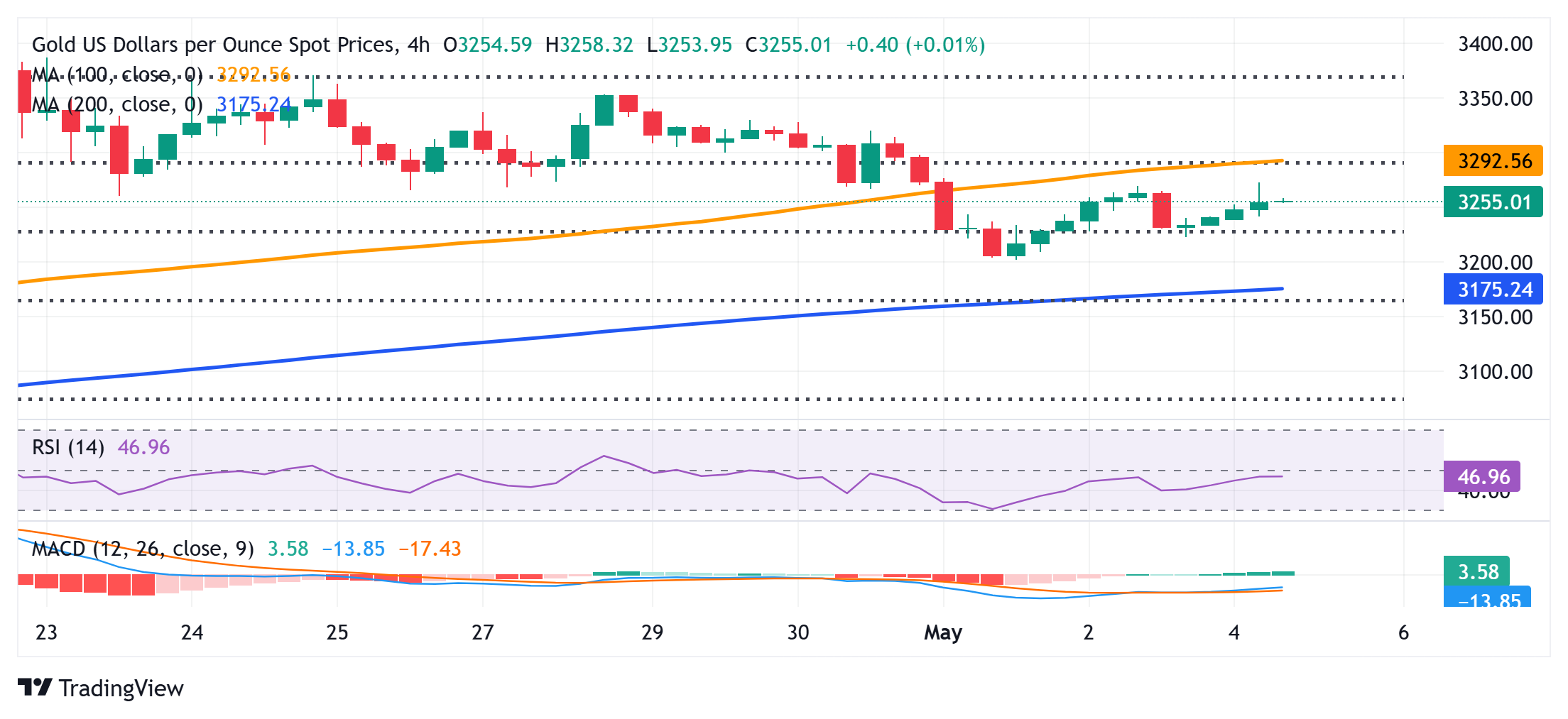-
Gold price rebounds on Monday as renewed geopolitical tensions lift safe-haven demand.
-
A subdued USD, lingering below its multi-week high, continues to support the precious metal.
-
Attention now turns to the key two-day FOMC policy meeting beginning Tuesday.
Gold price (XAU/USD) holds steady near its daily high during the early European session, extending its recovery from the $3,200 area—marking a more than two-week low hit last Thursday. Ongoing geopolitical tensions, including the prolonged Russia-Ukraine conflict and escalating unrest in the Middle East, continue to support safe-haven demand for gold. Additionally, investor sentiment remains fragile amid uncertainty surrounding former US President Donald Trump’s proposed tariffs, further boosting the appeal of the precious metal.
The initial optimism following Friday’s stronger-than-expected US monthly jobs report has faded quickly, dampened by growing economic concerns tied to Trump’s tariff rhetoric. Moreover, increasing speculation about an imminent start to the Federal Reserve’s rate-cutting cycle is keeping the US Dollar (USD) subdued below recent multi-week highs, lending further support to non-yielding gold. Still, XAU/USD bulls appear cautious ahead of the pivotal two-day FOMC policy meeting beginning Tuesday.
Daily Digest Market Movers: Gold price supported by renewed safe-haven demand and a weaker USD
-
In a Sunday interview, Russian President Vladimir Putin asserted that Russia possesses the strength to bring the Ukraine conflict to a "logical conclusion," just before a unilaterally declared three-day ceasefire from May 8–10. However, Russia rejected joint proposals from Ukraine and the US for an unconditional 30-day ceasefire.
-
Tensions in the Middle East escalated after Israeli Prime Minister Benjamin Netanyahu vowed retaliation against Yemen’s Houthi rebels following a ballistic missile strike on Ben Gurion International Airport. Netanyahu also warned Iran of consequences, to which Iranian Defence Minister Aziz Nasirzadeh responded with a threat of retaliation should Israel or the US initiate any attack.
-
In another move unsettling global markets, US President Donald Trump announced a 100% tariff on all foreign-produced movies on Sunday. The unexpected policy shift heightened investor anxiety, fueling safe-haven flows and helping gold prices extend their rebound from last week’s dip near the $3,200 level.
-
Traders scaled back expectations for a June interest rate cut by the Federal Reserve after Friday’s stronger-than-forecast US jobs report, which showed a gain of 177K jobs in April versus the 130K expected. The Unemployment Rate remained steady at 4.2%, signaling continued labor market strength.
-
Despite the positive jobs data, the US Dollar remains under pressure and has failed to regain momentum, staying below the multi-week high reached last Thursday. Concerns over Trump’s aggressive tariff stance are contributing to broader economic uncertainty, adding to gold’s upside ahead of the pivotal two-day FOMC policy meeting beginning Tuesday.
-
Looking ahead, speeches from key Fed officials later this week will be closely watched for clues on future monetary policy. Meanwhile, Monday’s release of the US ISM Services PMI, along with developments in trade policy and geopolitical tensions, could provide further direction for the XAU/USD pair.
Gold Price Technical Outlook: Mixed signals suggest caution for bullish traders before chasing further upside
From a technical standpoint, gold displayed resilience last week by holding above the 50% Fibonacci retracement of its rally from the mid-$2,900 zone. The rebound from the $3,200 area suggests potential for further gains, but traders should remain cautious before anticipating a full extension of the recent pullback from the $3,500 all-time high reached in April.
A sustained move higher could push gold above the $3,300 level, targeting the $3,348–$3,350 supply zone, followed by the next resistance at $3,367–$3,368, and potentially the psychological $3,400 barrier.
On the downside, initial support is seen near $3,225—aligned with the 50% Fibonacci level. A decisive break below this zone could expose the $3,200 handle. Further selling pressure may open the door for a deeper correction toward the $3,170–$3,165 region, a key confluence of the 61.8% Fibonacci retracement and the 200-period Simple Moving Average (SMA) on the 4-hour chart. A clean drop below this level would likely attract fresh bearish momentum and signal potential for additional near-term weakness.






